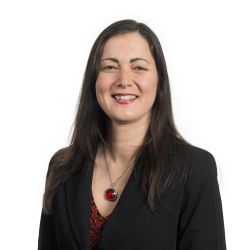Study of signalised intersections and protected bike lanes
Objective
Client
Location
Deliverable
Timeframe
Project Status
Background
The IPENZ Transportation Group aims to advance the knowledge base and practice of the transportation profession in New Zealand. Each year the Group provides a Study Award for a Group member to perform study in New Zealand or overseas, to learn about issues that are important and topical in the transportation area, and then to spread that useful and usable knowledge to peers.
In 2016, the IPENZ Transportation Group committee granted the study award to two members, Megan Fowler (ViaStrada) and Claire Graham (Auckland Transport) as both submitted similar and complementary proposals relating to protected bike facilities. Megan and Claire undertook independent trips to different locations and focusing on different topics, with the intention of combining their findings to produce useful guidance for the industry.
Study focus
Megan's study focused on ways of addressing the conflicting movements of bicyclists and motorists at signalised intersections involving protected bike lanes.
As a base, she identified a number of ways these conflicts can be addressed:
- By providing full protection of all movements - i.e. operating the traffic signals in a way that conflicting bicyclist and motorist movements will never be permitted concurrently - this necessitates specific signals for bicyclists.
- By using permissive (i.e. filter) turns, whereby turns are not fully protected and turning motorists may judge when it is necessary to yield to bicyclists and when it is appropriate to turn across the bicyclist trajectory
- These could be accompanied by marking treatments through the intersection to highlight the potential for conflict.
- By designing "protected intersections" which involve specific features related to geometric layout and signal operation to minimize the likelihood of conflicting movements occurring at the same time, and enhance motorists' awareness of the requirement to yield to bicyclists when such conflicting movements do occur concurrently.
- By addressing the conflict on the approach to the intersection:
- Using mixing lanes, where the protected bike lane terminates prior to the intersection and vehicles merge with bicyclists in the curbside lane.
- For an add-lane layout, the protected bike lane (or "track") transitions to an on-road cycle lane, with markings and signs to indicate that motorists turning right into the turn lane must yield to bikes.
Each of these measures has different implications such as:
- Level of service to bicyclists, motorists and pedestrians (in terms of delay and proportion of intersection green time)
- Level of compliance of bicyclists and motorists with the signal displays
- Risk and safety consequences of conflicts
Study tour aims
In line with the focus outlined above, Megan's study had the following specific aims:
- Identify what treatments are currently used, and learn of any others that have not been listed above.
- Learn why these treatments have been chosen (project history and development, especially where other treatments may have been previously trialled and rejected / modified).
- Learn how effective these treatments are (if this has been evaluated in any way, or as judged by local experience).
- Learn what the associated problems are.
- Learn how the design and operation was constrained by the existing legal framework, and what would have been done differently if those constraints did not exist.
Programme
Megan began with a comprehensive literature review.
The first phase of the study tour involved attending the NACTO conference in Seattle at the end of September 2016. This was made possible by an additional grant from the NZ Transport Agency.
After this, Megan visited Vancouver, Denver, Chicago, Toronto, Boston and New York, meeting with local practitioners and visiting sites of relevance to the project.
Outputs
While away, Megan maintained a blog detailing interests aspects of each location visited - the links to each blog post are:
- The adventure begins
- Seattle - home of Starbucks and superstar engineers
- Vancouver's protected network
- People who cycle
- Cycling a mile-high in Denver
- Chicago!
- All go in Toronto
- Boston (and Somerville, and Cambridge)
- New York - city of flashing (yellow) lights
Megan's main output was a paper and corresponding presentation for the 2017 IPENZ Transportation Group conference. She also had the opportunity to present her findings to Auckland Transport and the Auckland TG branch (with the luxury of spending more time than allocated at the conference itself) and the Christchurch TG branch.
Another output was an article for the Transportation Group's Roundabout Magazine (Mar 2017 issue) focusing on the specific treatment of mixing zones, and another article about flashing yellow arrows (Dec 2018 issue).
The study tour findings also informed Megan's paper on filter turning at traffic signals across cycleways presented at the 2018 SNUG workshop in Hamilton.
In 2020, Megan recorded a short video clip about providing for people who cycle at traffic signals, as part of ViaStrada's "Let's Talk" series.
Megan's work has also influenced the development of the Cycling Network Guidance, including a technical note on signalised intersection treatments for cyclists (due soon).




